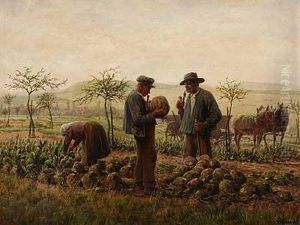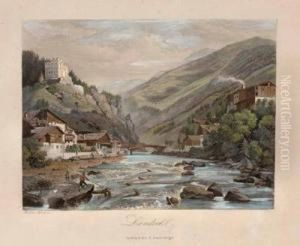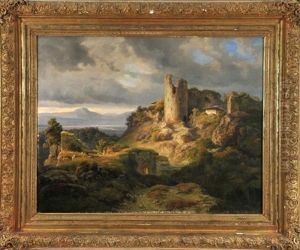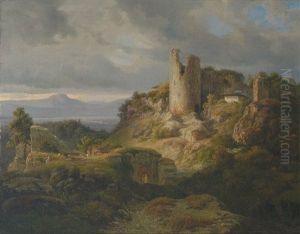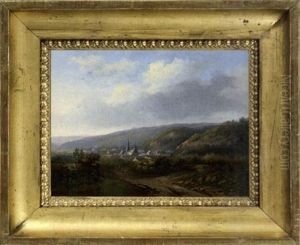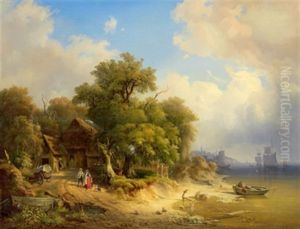Johann Heinrich Martens Paintings
Johann Heinrich Martens was a German artist born on March 11, 1744, in Hamburg. He is known primarily for his work as a landscape painter, capturing the natural beauty of the German countryside and other European locales. His paintings often reflected the classical landscape traditions of the time, showing an affinity for the balance between nature and human presence. Martens's works are characterized by their meticulous detail, vibrant colors, and the serene atmosphere they often evoke.
Martens received his early education in Hamburg before embarking on his artistic training. Although the specific details of his apprenticeship and early studies are not well-documented, it is known that he traveled extensively throughout Europe to further his skills and to draw inspiration from various landscapes and the work of other artists. This was a common practice among artists of his era, who would often embark on a 'Grand Tour' of Europe as part of their education.
Throughout his career, Martens exhibited his work in various salons and galleries, gaining recognition for his contribution to landscape painting. He was part of the movement that saw a growing appreciation for nature as a subject for art, which was emerging alongside the Romantic movement in literature and the arts. Martens's landscapes, thus, can be seen as a precursor to the more emotive and expressive landscapes of Romanticism that would follow in the 19th century.
Johann Heinrich Martens continued to work and paint until his later years, passing away on November 14, 1826, in Hamburg. Today, his paintings can be found in several art collections and museums, where they are appreciated for their historical value and their tranquil beauty. While he may not be as widely known as some of his contemporaries, Martens's work remains an important part of the history of German landscape painting.
